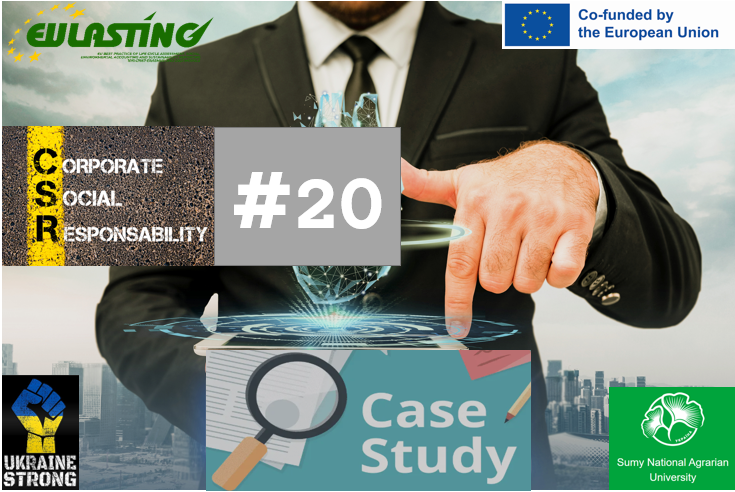Apple Inc. stands as one of the foremost exemplars of corporate sustainability reporting worldwide, demonstrating a rigorous and transparent approach that sets a high industry bar. Its 2024 Environmental Progress Report, supported by annual updates and extensive digital disclosures, reveals a comprehensive, data-rich overview of the company’s environmental strategy, achievements, and ongoing challenges.
Strong Governance and Strategic Vision
At the heart of Apple’s sustainability journey is a governance framework deeply integrated into the corporate structure. The Environment, Policy, and Social Initiatives (EPSI) team reports directly to senior management and influences decisions at the Board level. This direct accountability structure reinforces sustainability as a core strategic pillar.
Apple’s public commitment to carbon neutrality — across its entire supply chain and product lifecycle by 2030 — underscores the company’s forward-looking, science-based path. The 2024 report indicates that since 2015, Apple has reduced its carbon footprint by 60%, achieving a 38% reduction in absolute emissions and a further 22% reduction through optimized energy use and supply chain initiatives.
Emissions accounting includes all three scopes:
-
Scope 1 (direct emissions) and Scope 2 (energy indirect) totaled 0.1 million metric tons of CO₂e in FY 2024.
-
Scope 3 (supply chain, product use, end-of-life) remains the largest footprint element at approximately 15 million metric tons CO₂e, emphasizing the critical focus on supplier collaboration and circularity.
Energy Transition and Renewable Power Leadership
Apple operates 100% renewable energy across all facilities including offices, data centers, and retail stores — a milestone reached in 2018 and maintained through continual investments primarily in solar and wind projects. The 2024 report details:
-
Over 500 megawatts of new clean energy capacity commissioned in FY 2024.
-
Direct impact from the 1.3 gigawatts of renewable energy capacity facilitated globally through supplier partnerships.
-
Supply chain suppliers in 19 countries now powering their Apple-related operations with 100% renewable energy, preventing 13.7 million metric tons of CO₂ emissions annually.
Compared to industry peers such as Samsung (62% renewable) and Dell (56%), Apple’s fully renewable operational footprint demonstrates leadership and sets precedence.
Product Circularity and Climate Impact
Apple’s innovative commitment to product sustainability is evidenced by an extensive circular economy program, which includes:
-
The Daisy robot, which disassembles returned devices, recovered 40,000 kilograms of rare earth materials in FY24—a 30% increase over the prior year.
-
Use of recycled materials increased dramatically: 100% recycled gold in iPhone logic boards, 100% recycled aluminum enclosures in MacBook Air M4, and increasing recycled rare earths in other critical components.
-
Reduction in carbon footprint per product shipped to 47 kg CO₂e — 20–30% lower than comparable industry estimates for mainstream electronics devices.
Lifecycle analysis and packaging innovation reflect these advances, with Apple currently achieving 90% recyclable product packaging and aiming for 100% by 2025.
Water Stewardship and Waste Reduction
Water usage and conservation form critical components of Apple’s environmental stewardship:
-
Reduction of 38% in water use since 2015.
-
Community impact programs providing clean water access to more than 6 million people globally.
-
Zero waste certification for eight manufacturing facilities and 95% waste diversion company-wide.
Apple’s transparent disclosure includes water use efficiency targets, site-by-site water risk assessments, and third-party verification.
Social and Supply Chain Responsibility
Apple’s Supplier Code of Conduct and compliance program covers 1,200+ suppliers, audited regularly for labor standards, safety, and environmental performance. Important metrics included:
-
Living wage programs extended to 100,000 supplier employees.
-
60 supplier training programs and worker empowerment initiatives.
-
80% reduction in work-related injuries at supplier sites over five years.
Supplier environmental performance is a priority, with direct collaboration to adopt clean energy and reduce emissions.
Assurance, Transparency, and Reporting Innovation
Apple engages SGS and other third-party verifiers to audit and assure all key ESG disclosures. Its annual Environmental Progress Reports offer:
-
Detailed methodology notes explaining scope boundaries, inventory, and calculation techniques.
-
Interactive online dashboards that allow investors, analysts, and the public to drill down into data.
-
References to GRI, TCFD, SASB, and ISSB sustainability reporting frameworks.
Sustainability reporting is synchronized with financial disclosures, enhancing stakeholder confidence and aligning with increasing regulatory mandates worldwide.
Quantitative Highlights (Selected FY 2024 Data)
| Metric | Result | Comparable Peers |
|---|---|---|
| Total Carbon Footprint (million metric tons CO₂e) | 15.5 (Scope 1,2,3 total) | Samsung: 20.4, Dell: 17.6 |
| Renewable Energy Use (% of global operations) | 100% | Samsung: 62%, Dell: 56% |
| Carbon Footprint per Product (kg CO₂e/device) | 47 | Industry avg: 65–70 |
| Materials Recycled (tons rare earth metals) | ~40,000 | NA |
| Water Use Reduction since 2015 (%) | 38% | Apple’s aspirational peers |
| Supply Chain Renewables Participation (%) | 95% supplier facilities | Benchmarked Supplier Avg: 70% |
| Waste Diversion Rate (%) | 95% | Industry avg: 80% |
| Workers Receiving Living Wage | 100,000 | Industry benchmark varies |
Strategic Outlook
Apple is firmly committed to expanding its climate and sustainability ambitions post-2030, focusing on expanding regenerative agriculture sourcing, circular economy innovations, and ecological restoration projects.
Apple’s continuous upgrades to reporting technologies, transparent disclosures, and ambitious science-based targets form a robust model adaptable across global industries.
Further Reading and Resources:
-
Apple Environmental Progress Report 2024:
https://www.apple.com/environment/pdf/Apple_Environmental_Progress_Report_2024.pdf -
Apple Environmental Progress Report 2025:
https://www.apple.com/environment/pdf/Apple_Environmental_Progress_Report_2025.pdf -
ESG Reporting Frameworks Mentioned in Apple Reports:
https://www.globalreporting.org
https://www.sasb.org
https://www.ifrs.org/groups/international-sustainability-standards-board/ -
Third-party Assurance Provider (SGS):
https://www.sgs.com/en



